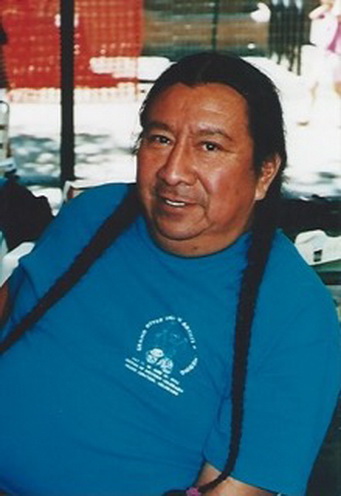 Image courtesy of Charles A. Simmons, owner of Yellow Dog Trading Company |
Robert G. Naranjo | |
| Birth Date: 1943 |
||
Artist Gallery |
||
| Born in 1943, Robert Naranjo is a prominent Pueblo Native American Potter who has won several awards for his work. The Robert Naranjo Gallery is located in Fairview, New Mexico, and features traditional Santa Clara Pottery, both red and black - carved, slip-designed, and etched.
Santa Clara's Pueblo is a member of the Eight Northern Pueblos, and the people are from the Tewa ethnic group of Native Americans who speak the Tewa language. Thanks to cultural pride and a strong sense of identity, the Santa Clara people have retained many of their ancient traditions while integrating with the best of what the majority culture has to offer. Santa Clara Pottery is famous for producing hand-crafted pottery, specifically blackware and redware with deep engravings. Potters in Santa Clara are known for their creativity, excellence of design, high quality and large quantity of production, and are credited with the development of black pottery. Women were actively involved in pottery making at Santa Clara; in addition, a number of men and some children regularly took part in the craft. There were several ritualistic aspects of ceramics that were rooted in Santa Clara pottery. Clay was frequently referred to as "mother clay", and was believed to have a soul or deity. This allowed the pottery made from it to be more special, and more symbolic to the culture and heritage of the people. Like many other versions of New Mexican pottery, the pots are assembled, slipped, fired and polished to create something unique. They go through an extensive soaking, screening, mixing and shaping process, which displays the detail and precision these potters go through to reach their end goal. At Santa Clara, there were four methods of decorating pottery: painting, impressing, carving, and a resist-firing technique with incised designs.
Many of Robert Naranjo's wares are polished and carved; usually of a shiny black texture that defines his work. Carving the vessel is a very effective way to create small details and surface pattern, whereas techniques like impressing are less exact, and open for more error and personality to shine through. This particular seed pot was painted with a black-on-black decoration – a matte-black paint was applied to a highly polished background in order to produce negative images. This requires a lot of skill and precision with fine details.
Some traditional shapes of Santa Clara pottery include: ceremonial bowls, wedding vases, water jars, storage jars, melon bowls, plates, and variable bowls. Some traditional designs of Santa Clara pottery include water serpents, bear paws, nature signs, feathers, and rainbows. All of these are deeply symbolical, and all allude to elements found in nature, and to our existence. Naranjo’s “Seed Pot” has symbols of eagle feathers, points of star, fire birds, and rain clouds. Historically, seed pots were designed to protect the seeds for next year’s planting from rodents and insects. A wide-mouthed vessel like a traditional bowl, jar, or olla could not keep vermin out. To combat this, seed pots were created with a small opening that would allow one seed to be dropped in at a time. When the time for spring planting came, the seed pots would be smashed so all the seeds collected during the winter months could be used. Today's seed pots are purely decorative, as seen with this particular piece by Naranjo.
|
||


